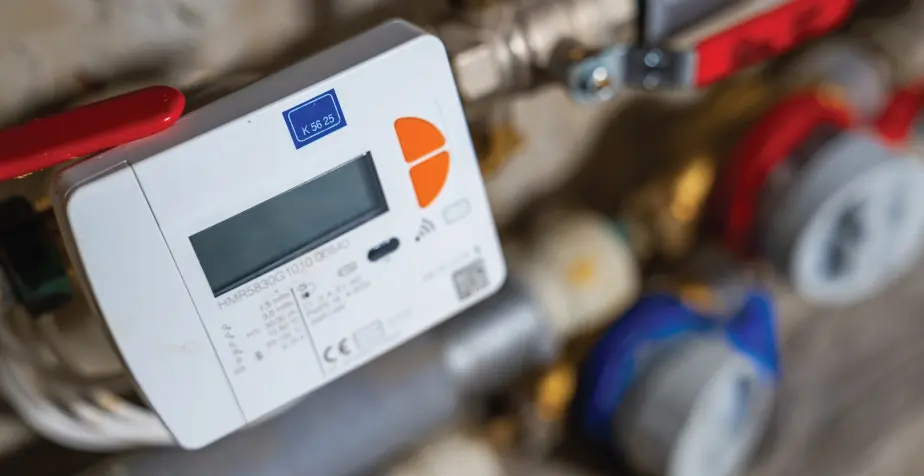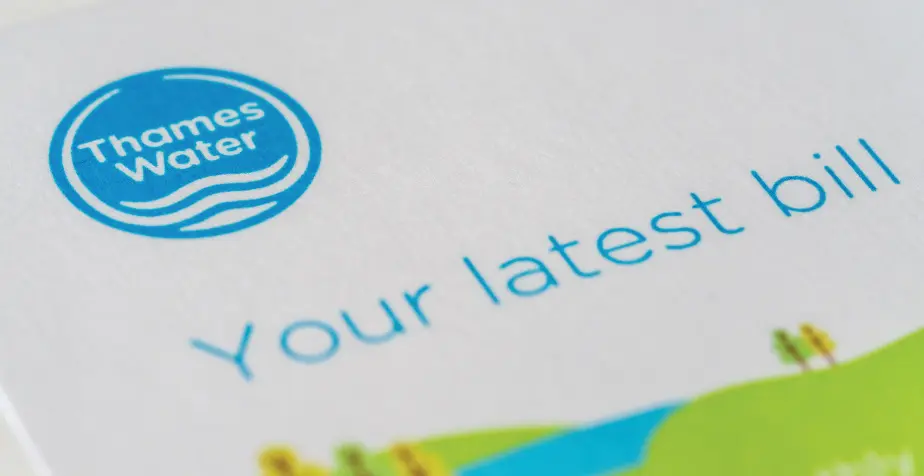Understanding Water Rates in the UK
Water is one of the most essential resources that every UK business relies on, whether it’s for day-to-day operations, manufacturing processes, or simply maintaining safe and sanitary working environments.
Despite its importance, many companies lack a clear understanding of how their water charges are determined, what factors influence their monthly bills, and more importantly, how much they could potentially save by reviewing their current arrangements. The complexity of water pricing in the UK, driven by a mix of regional differences, metering types, service charges, and retail market dynamics, often leaves businesses in the dark.
With the water industry in England and Scotland now deregulated, there are more choices than ever for commercial customers, yet navigating those options can be overwhelming without the right information. Regional variations in pricing, differing service standards, and the ability to switch suppliers all play a significant role in how much a business pays for water and wastewater services.
For many organisations, especially SMEs juggling multiple overheads, gaining control over water costs can unlock real financial benefits. That’s why we’ve created this comprehensive guide, to demystify the world of business water rates, introduce you to the key regional suppliers, and show you how to manage your water usage more strategically and cost-effectively.
What Are Business Water Rates?
Business water rates are charges that companies pay for the supply of fresh water and the removal of wastewater. These charges differ from domestic rates and are influenced by factors such as:
- Your water usage
- Business size and sector
- Location and supplier
- Metered or unmetered supply
Water services in the UK were deregulated in April 2017, allowing businesses in England to choose their water supplier. This competitive market gives companies the chance to shop around and find better rates or improved customer service. However, in Scotland, deregulation started even earlier in 2008, while in Wales and Northern Ireland, the market remains mostly closed.
You can explore your regional water supplier by visiting our regional supplier directory, where you’ll find detailed information on the providers serving your area.
How Are Business Water Rates Calculated?

Understanding how your water bill is calculated is crucial for managing your costs. Generally, your bill includes two main charges:
Water Supply Charges – for the clean water your business uses.
Wastewater Charges – for removing and treating sewage and trade effluent.
Metered vs Unmetered
Metered: Most businesses have water meters, which means you’re charged based on the volume of water used (measured in cubic metres).
Unmetered: If your premises don’t have a meter, your bill is calculated based on the rateable value of the property.
You may also encounter standing charges, which are fixed daily fees covering maintenance of the water infrastructure.
Regional Variations in Business Water Rates

Water rates can vary significantly across the UK depending on your location and water supplier. Below is a breakdown of the major regional suppliers and what businesses need to know.
- Scottish Water
As the only water wholesaler in Scotland, Scottish Water provides water to business customers through licensed retailers. While the market is deregulated, businesses can’t choose their wholesaler, just their retailer.
Scottish businesses can potentially save by comparing retailers and switching based on better tariffs or customer service.
- Northumbrian Water
Operating in the northeast of England, Northumbrian Water supplies clean and wastewater services. Rates in this area may be higher than average due to geographical and infrastructure factors.
Businesses here should pay close attention to seasonal water use, particularly those in manufacturing or hospitality.
- Yorkshire Water
Yorkshire Water serves over 140,000 business premises in the region. With a high demand from agriculture and food industries, water efficiency becomes a priority for many businesses.
They also offer environmental audits, which can help large water users manage consumption and costs.
- United Utilities
Covering the North West, United Utilities is one of the largest suppliers in the UK. The company is known for significant investment in digital metering, giving businesses detailed usage reports.
Using these tools, businesses can gain deeper insight into their water consumption patterns and reduce waste.
- Severn Trent
Severn Trent supplies both the Midlands and parts of Wales. It offers various support services to businesses, including leak detection and sustainability advice.
Businesses in this region may benefit from strong supplier competition due to its size and infrastructure.
- Anglian Water
Located in one of the driest regions of the UK, Anglian Water often has higher tariffs due to the cost of maintaining supply. Water efficiency is key for businesses operating in this region.
Anglian has several commercial efficiency programmes worth exploring for larger businesses.
- Thames Water
As the UK’s largest water supplier, Thames Water serves businesses in London and the South East. With large-scale urban infrastructure, they provide robust support and water-saving incentives.
However, urban areas may also face challenges like higher wastewater charges, especially during periods of heavy rainfall.
- Southern Water
Covering the South East coast, Southern Water has a complex tariff system depending on your exact location and usage patterns. Businesses should regularly review their usage and compare retailers.
Their support for industries with high water demands makes them a viable option for manufacturing and food production sectors.
- Wessex Water
Serving South West England, Wessex Water is praised for its strong customer service. Businesses may also benefit from their sustainable drainage schemes.
Wessex offers incentives for businesses that reduce surface water discharge into the sewerage system.
- South West Water
South West Water has historically higher tariffs due to the cost of serving rural and coastal areas. However, their business support teams offer bespoke advice and flexible billing.
They also promote water-saving technologies and leak prevention programmes for SMEs and large enterprises alike.
Why Understanding Your Water Rates Matters
Understanding your water rates is more important than many UK businesses realise, especially given that companies now have the right to switch water retailers.
Reviewing your current rates can lead to significant benefits. One of the most immediate advantages is cost savings, businesses that switch providers often reduce their bills by 10% or more, depending on their usage patterns.
Beyond just saving money, choosing a different supplier can also lead to better customer service, with some retailers offering dedicated account management and tools tailored specifically for businesses.
Sustainability is another key factor; many modern water retailers provide value-added services such as water efficiency audits, installation of water-saving devices, and support for eco-friendly initiatives to help reduce your environmental impact.
Additionally, for companies operating across multiple sites, switching can simplify billing by consolidating everything into a single, easy-to-manage invoice.
How to Switch Business Water Suppliers

If your business is based in England or Scotland, switching water suppliers is a relatively straightforward process, thanks to the deregulated market. The first step is to check your current water contract to ensure you’re not tied into a fixed-term agreement that could result in early exit fees. Understanding the terms of your current deal will help you know when you’re free to switch and avoid any penalties.
Next, review your annual water usage. This information is usually available on your latest water bill and will give you a clear picture of your consumption levels. Knowing your usage is essential for getting accurate quotes and choosing the most cost-effective plan for your business.
Once you have this information, you can begin comparing available water retailers. You can do this through industry comparison tools or by reaching out directly to suppliers, but this is also where Tariff.com can provide real value. At Tariff.com, our team of utility experts simplifies the entire process for you. We’ll analyse your current usage, review your bills, and identify the most competitive water tariffs available based on your business needs. We work directly with trusted suppliers to secure tailored quotes, ensuring you don’t overpay for essential services.
When you’ve chosen the right provider, Tariff.com will manage the switch on your behalf from start to finish. There’s no disruption to your service, no paperwork headaches, and no added stress, we handle it all. Whether you’re looking to reduce costs, improve efficiency, or consolidate billing across multiple sites, Tariff.com is here to help your business take full control of its water supply.
For further information on the business water market and your rights as a customer, the Open Water website is the official resource offering comprehensive guidance on how the market works and what to expect during the switching process.
Common Questions About Business Water Rates
When it comes to managing water services, many businesses have questions about what’s possible under the current regulatory landscape. Understanding the rules and options available in your region can help you make informed decisions and avoid missed opportunities for savings.
Can I switch water suppliers if I’m in Wales or Northern Ireland?
No, the water market is not deregulated in these regions for most businesses. Your services will continue to be provided by your regional supplier.
What if I have multiple business sites?
Many retailers offer consolidated billing and multi-site management, which simplifies administration and may even offer volume discounts.
What if I suspect my water meter is faulty?
Contact your supplier immediately. You may be eligible for a test or inspection, and in some cases, you could be refunded for overcharges.
How do I know if I’m eligible to switch water suppliers?
If your business is based in England or Scotland and you’re not locked into a fixed-term contract, you’re eligible to switch water retailers. Checking your current agreement and understanding your usage will help you take advantage of the deregulated market.
Will switching water suppliers affect my water supply?
No, your physical water supply will remain uninterrupted and unchanged. Only the retailer, who handles billing and customer service changes. The infrastructure and actual delivery of water are still managed by the regional wholesaler.
What services can I expect from a new water retailer?
Retailers may offer competitive pricing, improved customer service, usage monitoring tools, consolidated billing for multi-site businesses, and sustainability support such as water efficiency audits or leak detection services.
What if I want to improve my business’s water efficiency?
Many water retailers, offer services like water audits, smart metering, and efficiency advice to help you cut consumption and reduce your environmental impact. This not only saves money but supports your corporate sustainability goals.
Take Control of Your Water Costs
Understanding how water rates work and what options are available to your business is the first step to taking control of your utility costs. Whether you’re a single-site SME or a multi-site enterprise, knowing your regional supplier, usage, and opportunities to switch can lead to both financial and environmental benefits.
Ready to start saving? Contact the Tariff team today.




